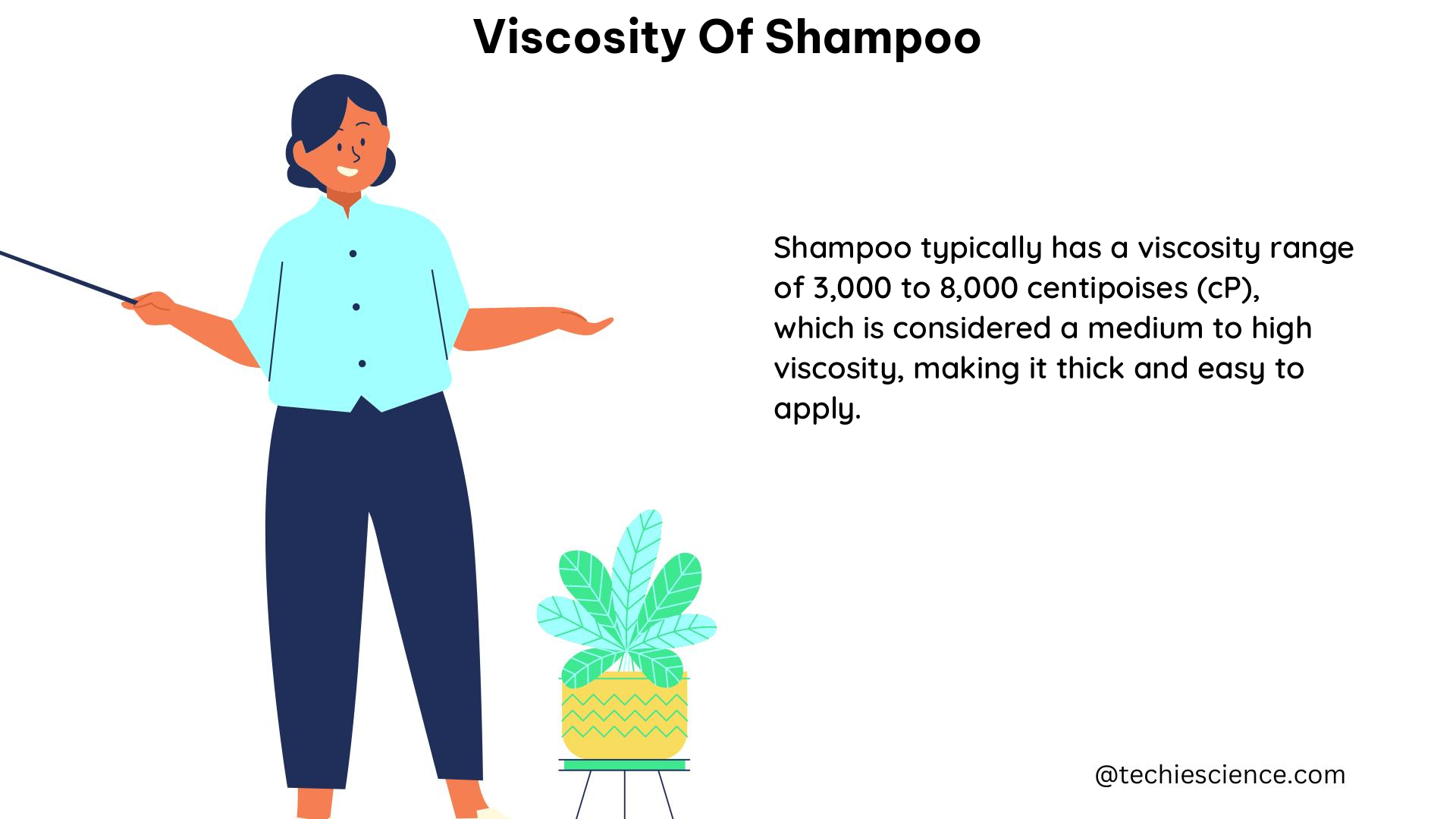Viscosity is a critical quality attribute in the personal care industry, particularly for products like shampoo, which are complex non-Newtonian liquids made up of aqueous surfactant systems. Understanding the viscosity of shampoo is essential for maintaining product quality, optimizing manufacturing processes, and ensuring efficient product performance.
Understanding the Rheology of Shampoo
Shampoo is a complex, non-Newtonian fluid, meaning its viscosity is not constant and depends on the shear rate applied to the fluid. This behavior is primarily due to the presence of surfactants, which form micellar networks within the aqueous solution. The viscosity of these systems is influenced by the build-up and breakdown of these micellar structures.
The relationship between the shear stress (τ) and the shear rate (γ̇) for a non-Newtonian fluid, such as shampoo, can be described by the power-law model:
τ = K(γ̇)^n
Where:
– τ is the shear stress (Pa)
– γ̇ is the shear rate (s^-1)
– K is the consistency index (Pa·s^n)
– n is the flow behavior index (dimensionless)
For shampoo, the flow behavior index (n) is typically less than 1, indicating a shear-thinning behavior. This means that as the shear rate increases, the viscosity of the shampoo decreases, allowing it to flow more easily during application and rinsing.
Factors Affecting the Viscosity of Shampoo

The viscosity of shampoo can be influenced by various factors, including:
-
Surfactant Concentration: The type and concentration of surfactants, such as Sodium Laureth Sulfate (SLES), Cocamidopropyl Betaine (CAPB), and Cocamide DEA (CDEA), can significantly impact the viscosity of the shampoo.
-
Salt (Chloride) Content: The addition of salt, often in the form of sodium chloride, is a common method used to adjust the viscosity of shampoo. The relationship between salt content and viscosity follows a well-known “salt curve.”
-
pH: The pH of the shampoo formulation can affect the ionization of the surfactants and the formation of the micellar network, which in turn influences the viscosity.
-
Temperature: The viscosity of shampoo is temperature-dependent, with the viscosity generally decreasing as the temperature increases.
-
Thickening Agents: Polymeric thickeners, such as Carbopol and Polyquaternium-7, can be added to shampoo to increase the viscosity and provide a desired flow behavior.
-
Shear History: The viscosity of shampoo can be affected by the shear history, as the micellar network can be disrupted and reformed during processing and application.
Measuring the Viscosity of Shampoo
Measuring the viscosity of shampoo is crucial for quality control and process optimization. Offline viscosity measurements can be performed using benchtop rheometers and viscometers, which provide accurate and reliable data. However, measuring the viscosity of personal care liquids, such as shampoo, during the manufacturing process (online) can be challenging.
One approach to address this challenge is the use of predictive models based on partial least squares (PLS) regression. These models have shown promising results in predicting the viscosity of shampoo. For example, a study reported a root mean square error of prediction (RMSEP) of 2.32 Pa·s for a concentrated region of interest, compared to 4.44 Pa·s for a larger range.
Another technique that has been explored is the use of Vis-NIR (Visible-Near Infrared) spectroscopy to quantify the concentrations of active substances in shampoo, such as SLES, CAPB, Carbopol, and Polyquaternium-7. These models have demonstrated strong correlations between the reference values and the calculated values, with standard errors of calibration (SEC) and cross-validation (SECV) in the range of 0.04% to 0.12%.
Practical Applications and Considerations
The viscosity of shampoo is a critical quality attribute that influences various aspects of product performance and manufacturing processes. Understanding and controlling the viscosity of shampoo can provide the following benefits:
-
Product Quality: Maintaining the desired viscosity range ensures consistent product performance, such as ease of application, lathering, and rinsing.
-
Process Optimization: Monitoring and controlling the viscosity of shampoo during manufacturing can help optimize process parameters, such as mixing, pumping, and filling, leading to improved efficiency and reduced waste.
-
Formulation Development: Understanding the relationship between formulation variables (e.g., surfactant concentration, salt content, pH) and viscosity can aid in the development of new shampoo formulations with targeted rheological properties.
-
Quality Control: Implementing predictive models and Vis-NIR spectroscopy techniques can provide real-time or near-real-time monitoring of viscosity and active substance concentrations, enabling effective quality control during production.
When working with the viscosity of shampoo, it is essential to consider the following:
- Non-Newtonian Behavior: Shampoo exhibits complex, non-Newtonian flow behavior, which requires specialized measurement techniques and analysis methods.
- Formulation Complexity: Shampoo formulations can be highly complex, with multiple surfactants, thickeners, and other additives, all of which can influence the viscosity.
- Process Conditions: The viscosity of shampoo can be affected by various process conditions, such as temperature, shear history, and residence time, which must be carefully controlled.
- Regulatory Compliance: Viscosity and other quality attributes of shampoo may be subject to regulatory requirements, which must be considered during product development and manufacturing.
By understanding the fundamental principles of viscosity, the factors that influence it, and the available measurement and prediction techniques, physics students can gain valuable insights into the rheological behavior of shampoo and its practical applications in the personal care industry.
Reference:
- Viscosity measurement in the personal care industry | Anton Paar Wiki: https://wiki.anton-paar.com/us-en/viscosity-measurement-in-the-personal-care-industry/
- Use of inline near‐infrared spectroscopy to predict the viscosity of shampoo using multivariate analysis: https://www.researchgate.net/publication/332807527_Use_of_in-line_Near_Infrared_Spectroscopy_to_Predict_the_Viscosity_of_Shampoo_using_Multivariate_Analysis
- Vis-NIR Spectroscopy Quantification of Shampoo Surfactants: https://www.news-medical.net/whitepaper/20190214/Vis-NIR-Spectroscopy-Quantification-of-Shampoo-Surfactants.aspx

The lambdageeks.com Core SME Team is a group of experienced subject matter experts from diverse scientific and technical fields including Physics, Chemistry, Technology,Electronics & Electrical Engineering, Automotive, Mechanical Engineering. Our team collaborates to create high-quality, well-researched articles on a wide range of science and technology topics for the lambdageeks.com website.
All Our Senior SME are having more than 7 Years of experience in the respective fields . They are either Working Industry Professionals or assocaited With different Universities. Refer Our Authors Page to get to know About our Core SMEs.